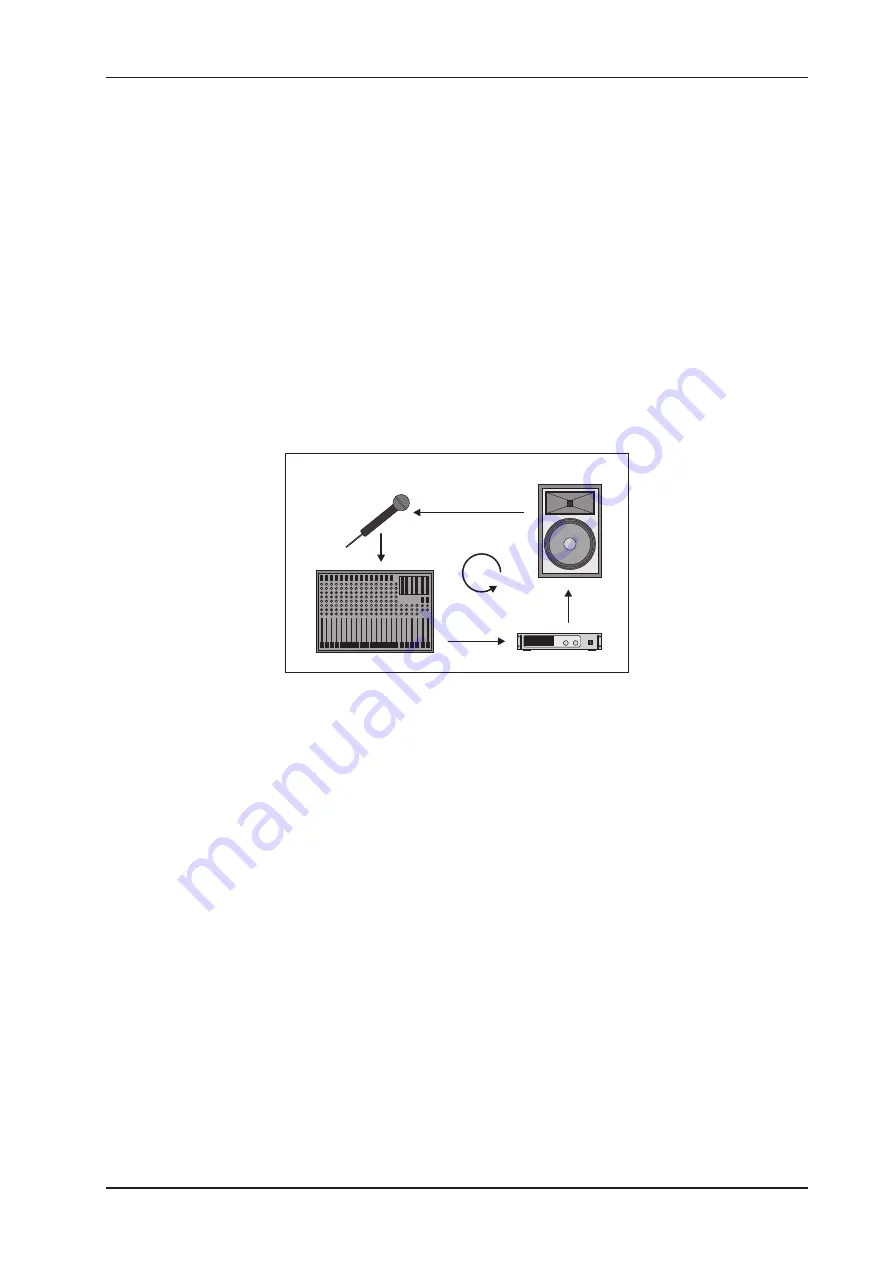
7
FEEDBACK DESTROYER PRO DSP1124P
+
Please note that all units must be grounded properly. For your own safety, you should never
remove any ground connectors from electrical devices or power cords or render them
inoperative.
As a standard, the BEHRINGER FEEDBACK DESTROYER PRO is equipped with electronically
servo-balanced inputs and outputs. The circuit design features automatic hum and noise reduction for
balanced signals and thus allows for trouble-free operation, even at high operating levels. Externally induced
mains hum, etc. will be effectively suppressed. The automatic servo-function recognizes the presence of
unbalanced connectors and adjusts the nominal level internally to avoid level differences between the input and
output signals (6-dB correction).
The MIDI interfaces IN, OUT, and THRU are on standardized DIN connectors. Data are transmitted via
potential-free opto couplers.
1.3 Background: How is feedback produced?
A feedback loop is produced when a microphone signal is reproduced by an amplification system and is
subsequently picked up again (with identical phase) by the microphone. If this happens repeatedly, such a
feedback loop can become ever more persistent.
Fig. 1.1: How a feedback loop is produced
1.3.1 Background: front of house mix (FOH)
There are two main sections in any sound reinforcement system, which are liable to produce feedback: the first
section is the so-called front of house mix (FOH), i.e. the public address mix, which is reproduced by one or
several amplifiers plus several loudspeakers directed at the audience.
1.3.2 Background: monitor mix
The monitor mix, which is often derived from the same console, feeds one or several stage-mount monitor
speakers. Unlike FOH systems, stage monitors are used to provide the individual musicians with a monitor
signal, because it is often difficult to hear oneself or each other on the stage, which can be due to the high
volume levels produced by the FOH systems, or to different volume levels of the stage-mount instruments and
amplifiers. It is therefore not unusual to give each musician his or her own monitor speaker, which is why there
are usually several monitor speakers placed along the stage. This is the only way to provide each musician
with a directed and focused monitor signal. In an ideal situation, each monitor provides a specific mix,
comprising e.g. vocals, drums and keyboards, for each individual musician on the stage.
Unfortunately, it is anything but easy to find perfect positions for the various stage monitors, because the
distance between speaker and microphone must be kept very short, which in turn increases the risk of
feedback.
+
In contrast to FOH systems, it is common practice to create two or even more dedicated
monitor mixes, which also involves the use of several monitor speakers. Again, this can lead
to increased feedback.
1. INTRODUCTION
Downloaded from www.g7syw.com
www.g7syw.com








































